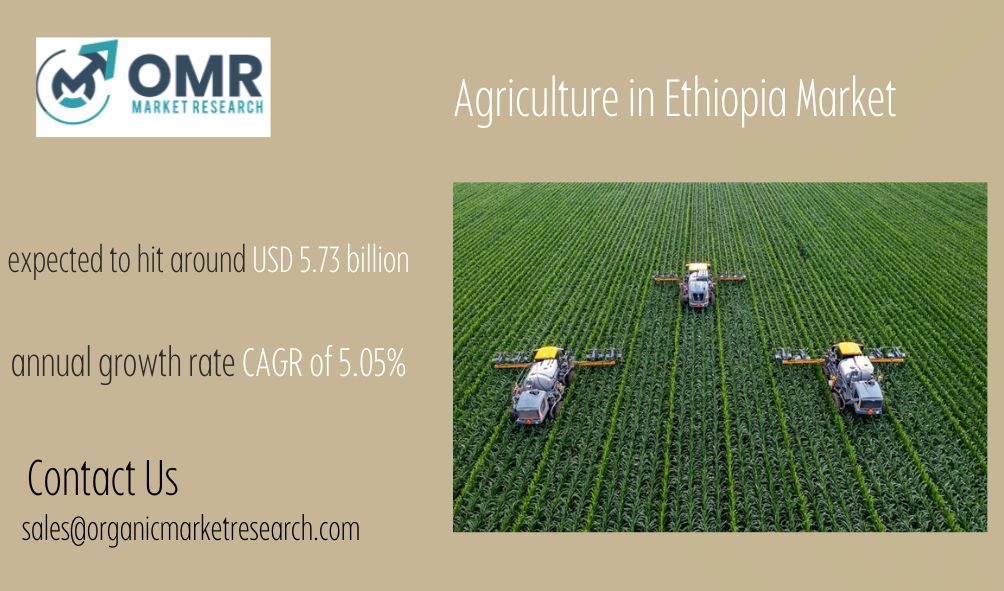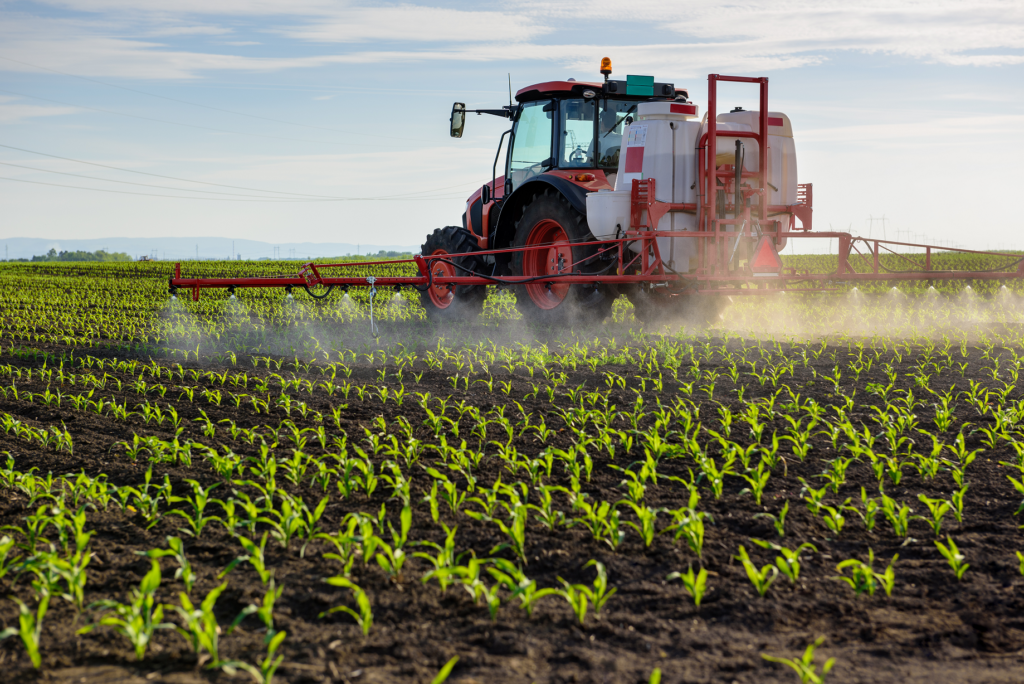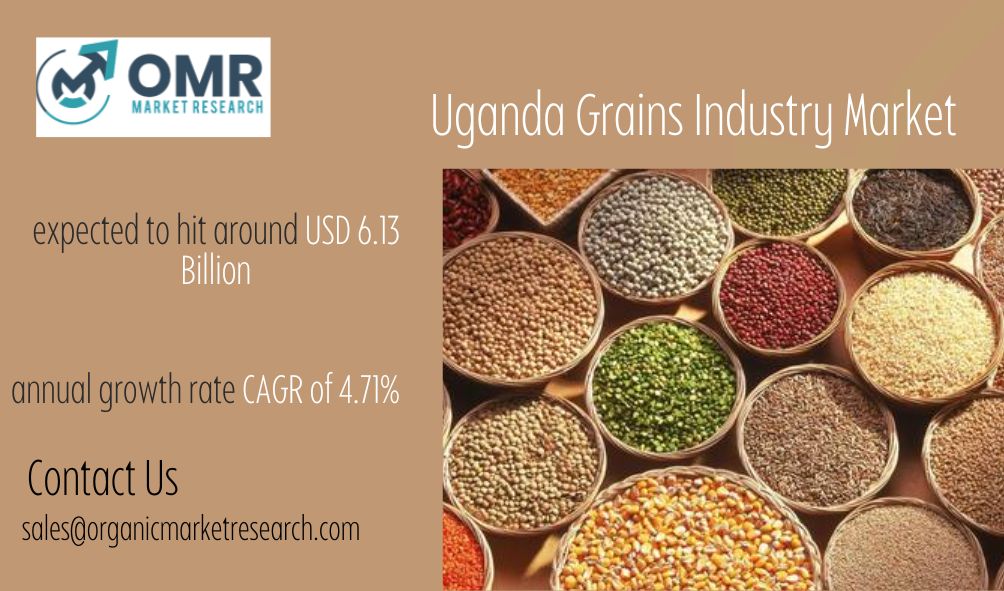Agriculture in Ethiopia market size was USD 5.73 billion in 2023 and the market is projected to touch USD 8.93 billion by 2032, at a CAGR of 5.05% during the forecast period. Agriculture in Ethiopia plays a vital role in the country’s economy, including farming activities like crop cultivation, livestock rearing, and agro-processing. It serves as the primary livelihood for a significant portion of the population, especially in rural areas. Ethiopia’s diverse climate and geography allow for the cultivation of various kinds of crops, including cereals like teff, maize, and barley, as well as coffee, pulses, and oilseeds. Livestock farming, including cattle, sheep, and goats, also contributes significantly to the agricultural sector. Additionally, agro-processing industries have been emerging, adding value to agricultural products and creating employment opportunities in the country.

Agriculture in Ethiopia report scope and segmentation.
Agriculture in Ethiopia dynamics
One key factor is the country’s dependence on rain-fed agriculture, making it vulnerable to climate variability and drought, which can impact crop yields and livestock productivity. This vulnerability also demands the importance of water management and resilience-building strategies in agricultural practices.
Moreover, Ethiopia’s growing population, coupled with urbanization and changing dietary preferences, drives demand for diverse food products, including staples like cereals and pulses, as well as high-value crops such as fruits and vegetables. This growing demand landscape presents opportunities for farmers to diversify their production and engage in value-added activities like processing and marketing. Additionally, the government’s policies and investments play a significant role in shaping market, with initiatives aimed at promoting agricultural modernization, enhancing access to inputs and credit, and improving market infrastructure and logistics.
Furthermore, other factors such as global commodity prices, trade policies, and international market trends also influence Ethiopia’s agricultural market dynamics, particularly for export-oriented crops like coffee and oilseeds.
Agriculture in Ethiopia drivers
Government Initiatives and Investments
The Ethiopian government’s commitment to agricultural development through various initiatives and investments is a key market driver. Policies that promote modernization, access to inputs, financial facilities, and market infrastructure development have been critical in increasing productivity and stimulating growth in the sector. For example, organizations like as the Agricultural Transformation Agency (ATA) have facilitated the spread of best practices, improved seeds, and technologies, resulting in higher yields and revenue for farmers. Furthermore, targeted investments in irrigation schemes and rural electrification have strengthened resilience against climate unpredictability, hence promoting sustained agricultural expansion.
Growing Demand for Export Commodities
Ethiopia’s agricultural economy benefits from rising global demand for its exports, particularly coffee and oilseeds. The country is one of the world’s top producers of Arabica coffee, which is renowned for its superior quality and distinct flavor profiles. Furthermore, rising demand for edible oil and other oilseed products creates prospects for industry growth and value addition. To remain competitive and capitalize on global market trends, it is necessary to continue investing in quality control, post-harvest handling, and market access infrastructure.
- Restraints:
Climate Change and Environmental Degradation
Ethiopian agriculture is particularly vulnerable to the negative effects of climate change, such as irregular rainfall patterns, extended droughts, and soil degradation. These issues have an impact not only on crop yields and livestock output, but they also worsen food insecurity and rural poverty. Addressing climate threats necessitates collaborative efforts to promote climate-smart agricultural methods such as conservation agriculture, agroforestry, and water harvesting techniques. Additionally, investments in early warning systems, crop insurance, and disaster risk management are vital for building resilience and mitigating the detrimental consequences of climate change on agriculture.
Limited Access to Finance and Technology
Many Ethiopian smallholder farmers continue to face considerable financial and technological constraints. Limited access to financing limits investment in agricultural inputs, equipment, and technology, reducing productivity and income production. Inadequate extension services, limited digital literacy, and infrastructure issues all impede the adoption of contemporary agricultural practices and technologies. To solve these constraints, innovative financial institutions such as microfinance, digital banking, and farmer cooperatives are required to increase access to credit and investment capital. Furthermore, capacity-building programs and partnerships with research institutions and private sector actors can assist the adoption and implementation of suitable technology adapted to the needs of smallholder farmers.
- Opportunities:
Agro-Processing and Value Addition
The increased demand for processed agricultural products provides opportunities for investment in the agroprocessing and value-added industries. Ethiopia can increase its part of the value chain and create job opportunities by adding value to raw agricultural commodities through processing, packaging, and branding, as well as satisfying the changing preferences of domestic and international consumers. Furthermore, value addition improves the shelf life and marketability of agricultural products, adding to income stability for farmers and lowering post-harvest losses.
- Segment Overview
Ethiopia’s agriculture market includes a variety of areas such as food crops, fruits, and vegetables. Food crops account for a sizable component of agricultural production, including staple grains such as teff, maize, barley, and wheat, which serve as food staples for the people. These crops are critical for food security and livelihoods, and smallholder farmers are primarily involved in their cultivation. Fruits are another major area, with a wide range of products such as bananas, citrus fruits, mangoes, and avocados. Ethiopia’s favourable conditions and geographical diversity encourage the production of a wide range of fruits, both for home use and export. Similarly, vegetables play an important part in the country’s agricultural industry, providing customers with critical nutrients and dietary diversity. From leafy greens like kale and spinach to root vegetables such as potatoes and carrots, Ethiopia produces a rich assortment of vegetables to meet local demand and supply urban markets.
Agriculture in Ethiopia market competitive landscape
Smallholder farmers are the backbone of the industry, accounting for a sizable amount of agricultural production, particularly in food crops like teff, maize, and barley. These farmers frequently encounter obstacles because to a lack of access to modern inputs, technology, and market information, which reduces their competitiveness and production. However, programs targeted at enhancing access to extension services, finance facilities, and market connections strive to strengthen smallholders’ capacity and resilience in the competitive setting.
Medium-sized firms play an important role in value addition and agro-processing, adding value to produce for agriculture while also contributing to job creation and rural development. These businesses specialize in milling, food processing, and packaging, and serve both domestic and international markets. Furthermore, larger agribusinesses, including commercial farms and multinational organizations, operate in horticulture, floriculture, and export-oriented products such as coffee and oilseeds. These organizations use economies of scale, innovative technologies, and market networks to increase efficiencies and capture value throughout the agricultural value chain.
Furthermore, the competitive landscape is influenced by government policies, trade dynamics, and market forces, which shape the operating environment for agricultural businesses. Initiatives aimed at promoting private sector investment, improving infrastructure, and enhancing trade facilitation contribute to a more conducive business environment.
Agriculture in Ethiopia Recent Developments
- In November 2022, the Ministry of Irrigation and Lowlands, in collaboration with Power for All, introduced the Powering Agriculture in Ethiopia initiative. This project seeks to enhance Ethiopia’s agricultural sector sustainably by employing decentralized renewable energy solutions (DREs) to bolster productivity and income.
- In October 2022, Ethiopia inaugurated the Distributed Renewable Energy-Agriculture Modalities (DREAM) project, backed by a budget of USD 20.5 million. This initiative is set to be executed across regions including Oromia, Amhara, Sidama, and the South Nations, Nationalities, and Peoples Regional State. Its primary objective is to elevate agricultural productivity by deploying solar mini-grids to facilitate improved irrigation services.
Scope of Agriculture in Ethiopia report
Agriculture in Ethiopia report segmentation
In case you don’t find what, you are looking for, please get in touch with our custom research team at
Latest Report
https://organicmarketresearch.com/global-hydroponics-market
https://organicmarketresearch.com/global-automotive-head-up-display-market
https://organicmarketresearch.com/global-spices-and-seasonings-market
https://organicmarketresearch.com/global-travel-retail-market
Contact Us
+91 9319642100
sales@organicmarketresearch.com
Noida One Tower Sec 62 Noida 201301
Website: https://organicmarketresearch.com











